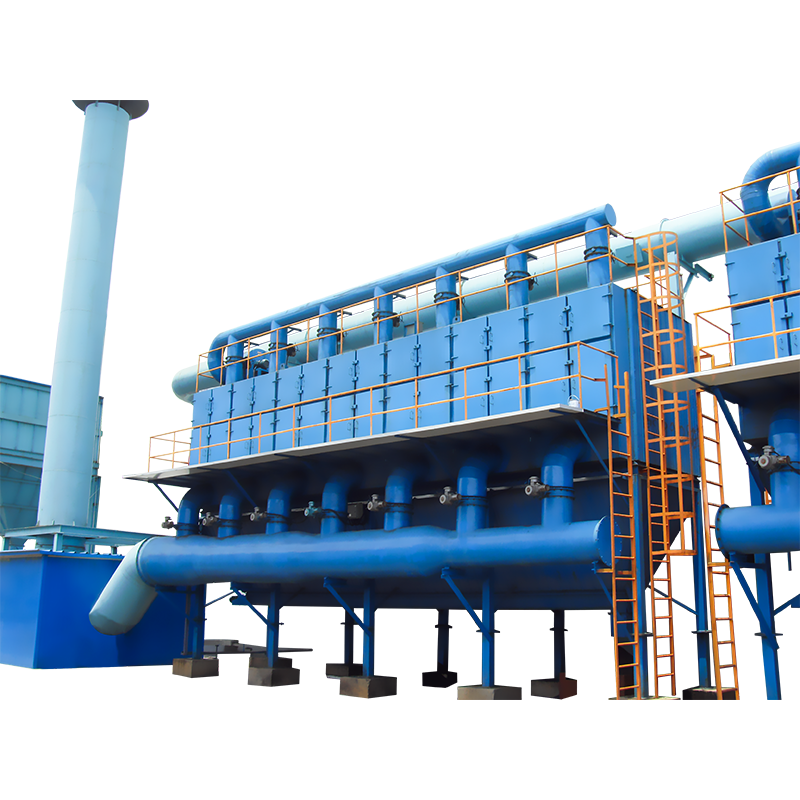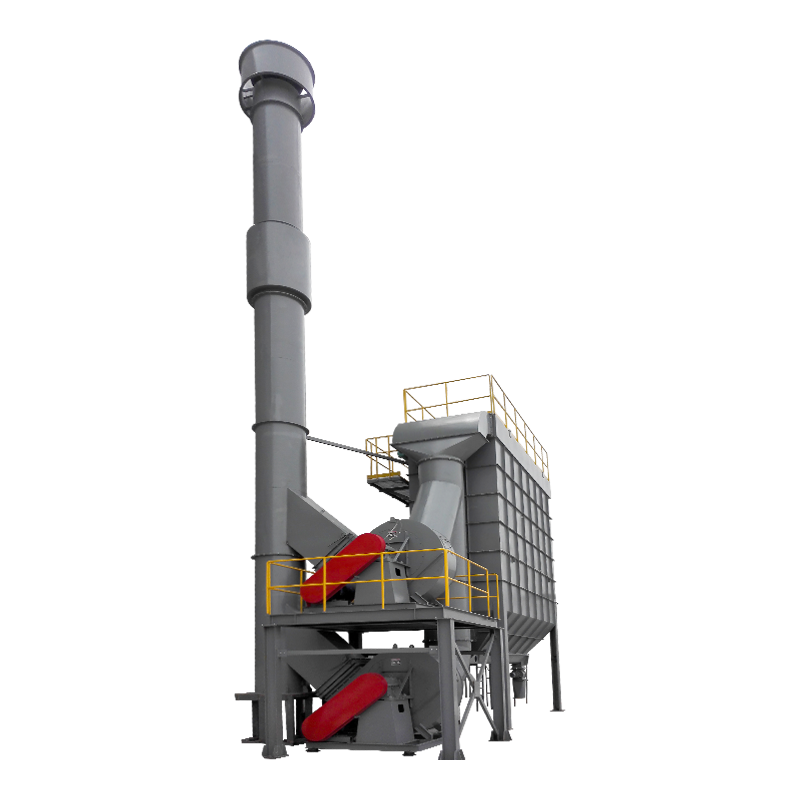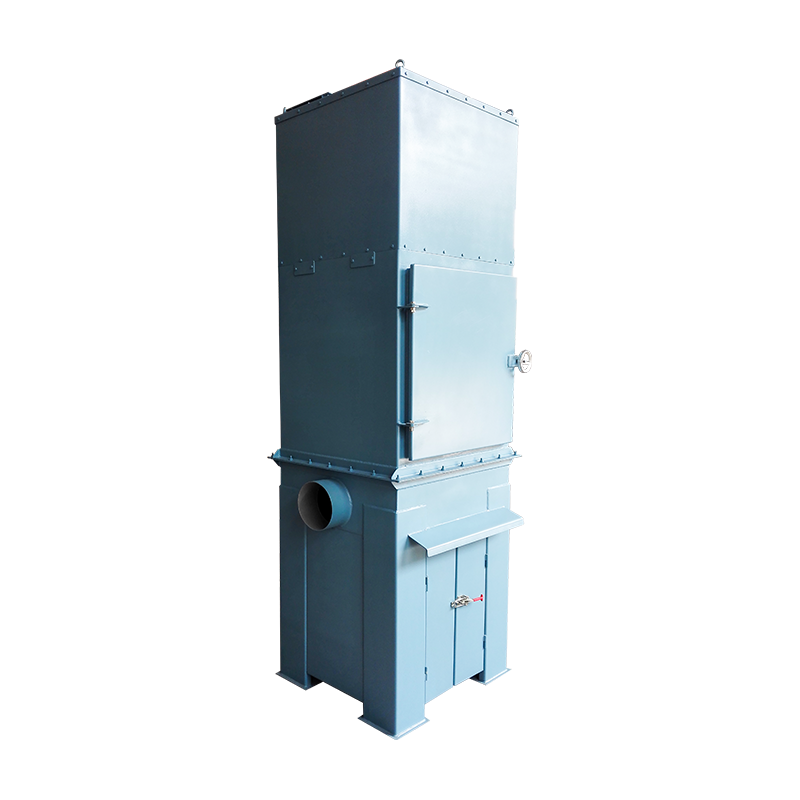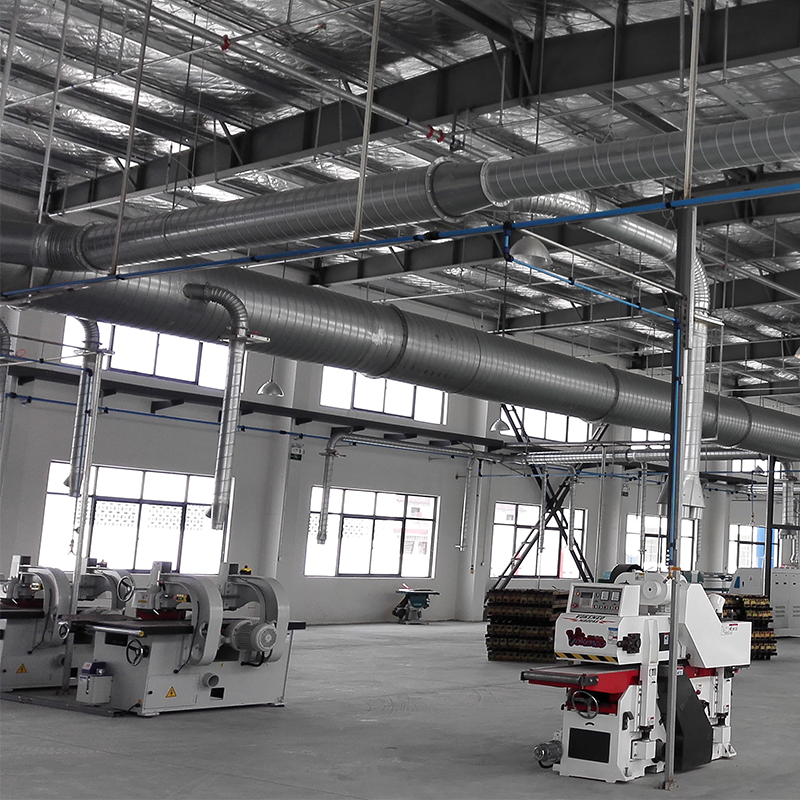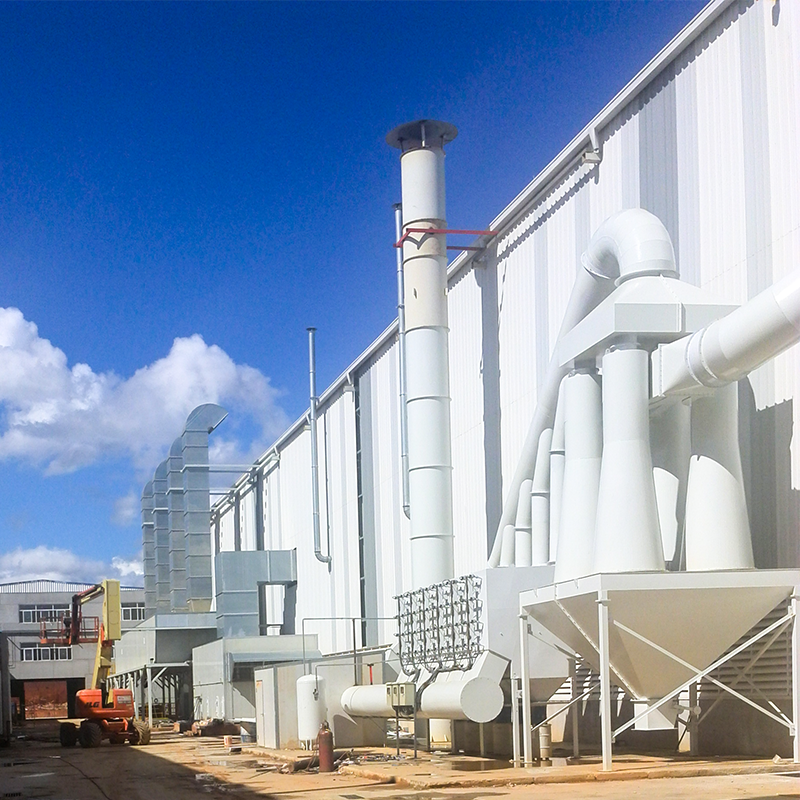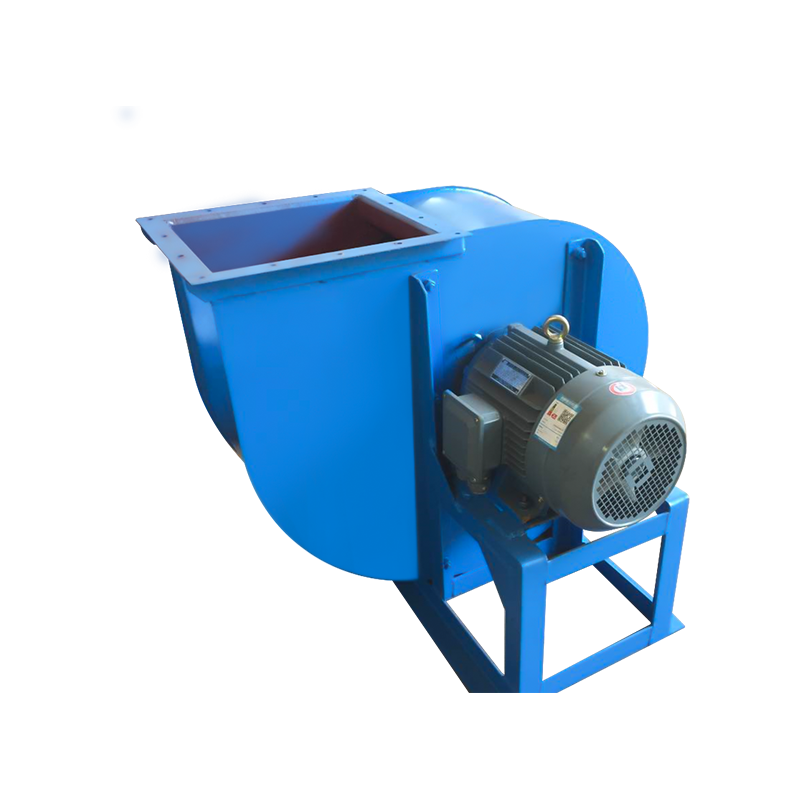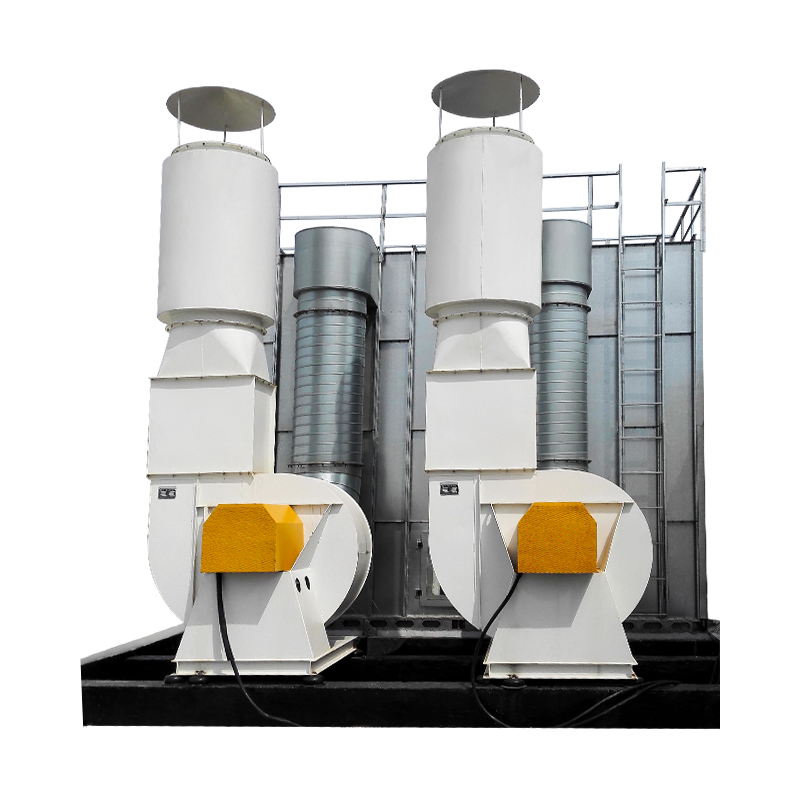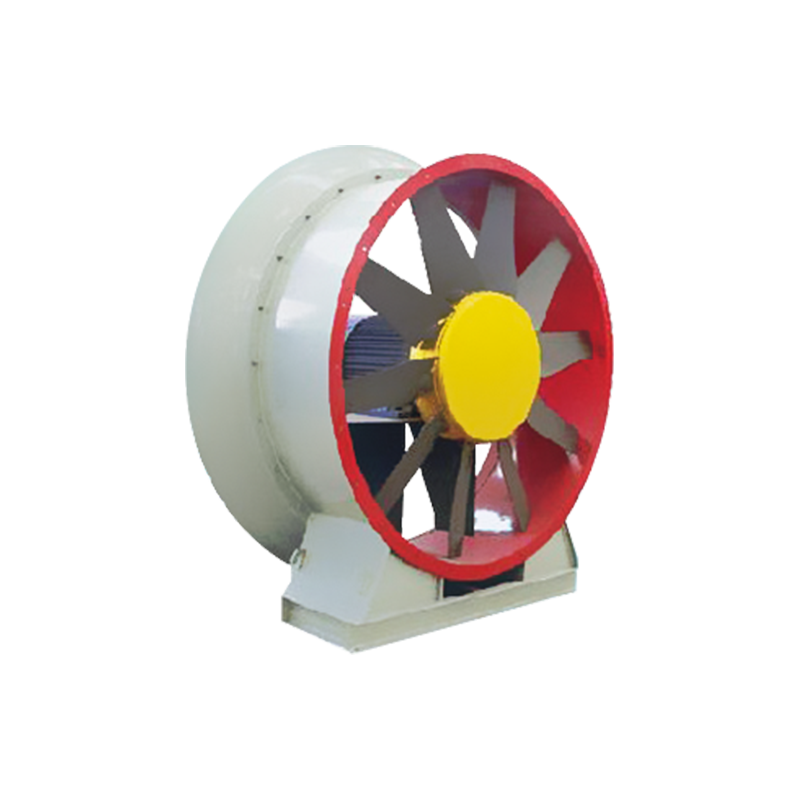In modern industrial production, dust control and air purification have become critical components for sustainable business development. With the rapid development of industries such as manufacturing, metallurgy, chemicals, and building materials, dust emissions continue to increase. Traditional dust removal methods are no longer able to meet the dual demands of high efficiency and environmental standards. Against this backdrop, the pulse jet collection system machine, with its advantages of efficient dust removal, stable operation, and easy maintenance, has become the preferred industrial dust removal solution for many companies.
I. Working Principle and Structural Features of the Pulse Jet Dust Removal System
The pulse jet dust removal system is a highly efficient dust removal device powered by compressed air, using a powerful, instantaneous jet of air to remove dust from the surface of filter bags or cartridges. Its core structure consists of a dust collection housing, filter bag system, spray piping, pulse valve, dust hopper, and control system. During operation, dust-laden air enters the dust removal chamber through the air inlet. Dust is trapped on the filter bag surfaces by layers of filter material, and the purified air is discharged, achieving gas-solid separation.
The equipment's most iconic feature is the pulse jet system. When dust accumulation on the filter bag reaches a set value, the pulse valve opens instantly, injecting compressed air at an extremely high velocity into the bag interior. This creates a strong reverse airflow, dislodging dust from the bag surface and dropping it into the hopper. The entire cleaning process is fast and efficient, requiring no downtime, ensuring continuous and stable system performance.
II. Technical Advantages of the Pulse Jet Collection System Machine
The pulse jet dust removal system offers significant technical advantages. Its reliable and stable cleaning performance allows for rapid removal of dust from the filter bag surface, maintaining low filtration resistance and extending the bag's service life. The system boasts a high degree of automation, with intelligent PLC control enabling precise adjustment of the jet time, cycle, and pressure, making operation more energy-efficient and adaptable.
The pulse jet system's compact design and minimal footprint make it suitable for various production site layouts. Its excellent sealing performance effectively prevents dust leakage, ensuring a clean and safe working environment. With the continuous advancement of filter material technology, such as the use of coated and nanofiber filter media, the equipment's filtration accuracy and durability have been significantly improved, enabling stable operation even in high-temperature, high-humidity, and corrosive gas conditions.

III. Expanding Application Areas of Pulse Jet Dust Removal Systems
The Pulse Jet Collection System Machine can cover virtually all industrial scenarios requiring dust control. Industries ranging from cement, metallurgy, power generation, chemicals, grain processing, wood processing, and machinery manufacturing widely use this system for fume purification and material recovery.
In large-scale industrial production lines, this system is often installed in dust-generating processes such as crushing, screening, and conveying to ensure that exhaust gases meet environmental standards. It also effectively recovers fine particulate matter generated during production, reducing material loss and improving production efficiency. For industries with extremely high air quality requirements, such as pharmaceuticals and food processing, the Pulse Jet Collection System Machine's high-efficiency filtration capabilities are even more crucial. It not only purifies the air but also prevents cross-contamination, providing a clean and stable production environment.
IV. Equipment Optimization Trends in Modern Industrial Environmental Protection
With increasingly stringent global environmental protection policies, the design concepts of pulse jet dust removal systems are constantly evolving. Current industry development focuses on intelligent control, energy efficiency improvements, and the use of environmentally friendly materials. Intelligent system control modules automatically optimize jet frequency and energy consumption through real-time monitoring of parameters such as pressure differential, flow rate, and temperature, achieving precise dust removal and energy-saving operation.
At the same time, equipment design is trending toward modularization and integration, allowing for flexible configuration based on production line requirements, reducing installation cycles and ongoing maintenance costs. Future Pulse Jet Collection System Machines will incorporate more high-temperature and corrosion-resistant new materials and continue to innovate in noise control and airflow optimization to meet higher-level industrial environmental protection requirements.
V. Energy Saving and Maintenance Value of Pulse Jet Dust Removal Systems
In long-term operation, energy efficiency and ease of maintenance are key considerations for companies when selecting dust removal equipment. The Pulse Jet Collection System Machine excels in energy control, with its pulse jets activated only when necessary, significantly reducing compressed air consumption. Furthermore, due to its thorough dust removal and stable filter bag resistance, fan operating power is optimized, thereby improving overall system energy efficiency.
In terms of maintenance, the equipment utilizes a modular filter bag design, making replacement and repair more efficient and reducing downtime. The automated control system provides real-time alarms and diagnostics for operating status, reducing the frequency of manual inspections and improving equipment reliability and safety. This efficient, low-maintenance operation not only reduces operational costs but also aligns with current industrial energy conservation and emission reduction trends.
As a significant achievement in modern industrial dust removal technology, the Pulse Jet Collection System Machine is continuously driving the development of the industrial air purification sector with its high efficiency, stability, energy conservation, and environmentally friendly features. It not only meets contemporary industrial environmental standards but also serves as a key cornerstone for enterprises' green transformation and intelligent manufacturing. In the future industrial landscape, pulse jet dust collection system equipment will continue to play a core role, contributing to a clean, safe, and sustainable production environment.

 English
English Español
Español عربى
عربى
